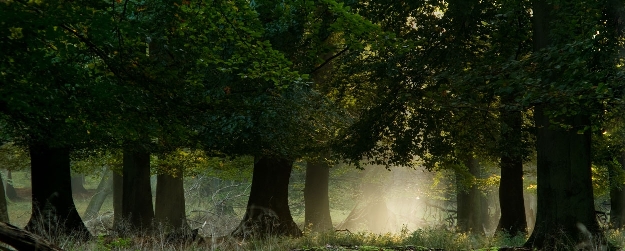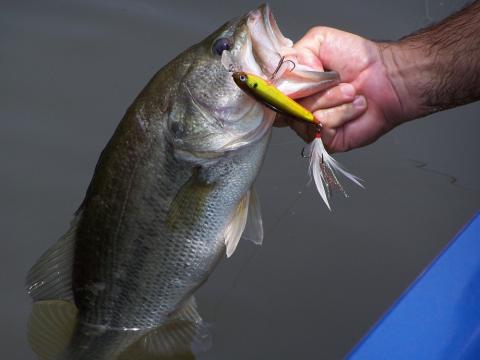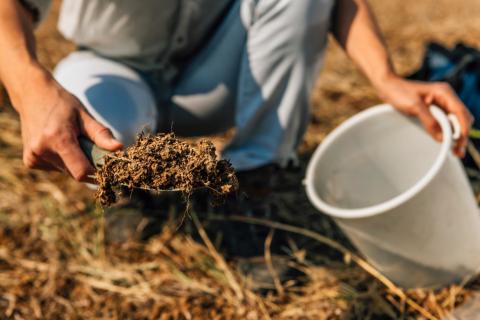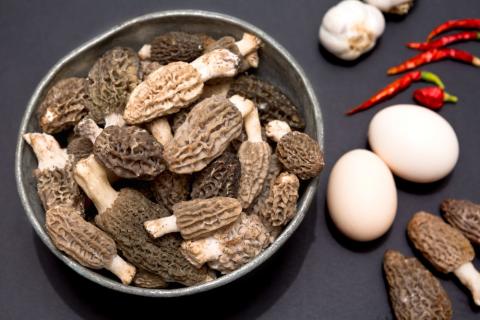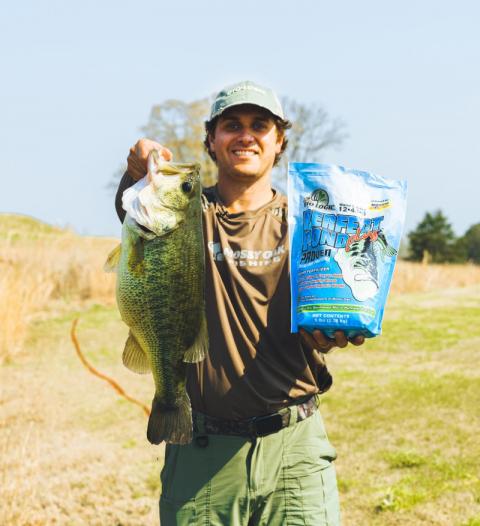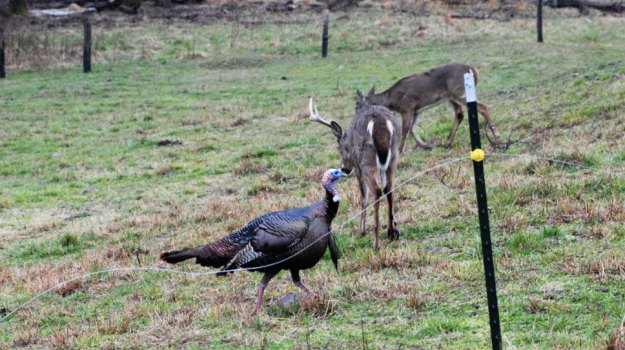
Editor’s Note: Avid outdoorsman Jerry Lambert of Battle Creek, Michigan, has been hunting turkeys for 15 years and has been a Mossy Oak Pro Staffer for 7 years.
I hunted this turkey about 2 or 3 years ago. Every afternoon after work, I saw this gobbler in a field that my dad owned, and this turkey would be leaving my dad’s field going toward our neighbor’s property. I tried for three afternoons to call that turkey back into my dad’s field, but he wouldn’t come. Finally, I decided to hunt that turkey on the weekend, so, I could get to the field earlier than 4 p.m. One Sunday afternoon, I arrived at the field at 3 p.m. I decided to use a system that I use today that I call, “glass, spot, stalk, call, turkey, go, boom.” I glassed the turkey first and got as close as I could to him. Then I staked to the other side of the field, staying out of the turkey’s sight.
I reached the spot where I had seen the turkey go out of the field on 3 consecutive days. When I got 150 yards from the gobbler, I started calling to him with three different hen turkey calls. The gobbler ignored all three calls. After I saw the turkey wasn’t going to come to the hen calls, I started gobbling to the turkey, and he acted a little more interested. Then I used two other callers I hadn’t used previously. I started calling to the turkey using hen calls on these two calls and watched as that ole bird slowly walked across the field, coming to me. I was dressed in full Mossy Oak camouflage and sitting in the shade of a big tree. When the turkey was within 30 yards, because he couldn’t see the hen that had been calling to him, he was about to bolt and run. So, I took the shot and secured that gobbler.
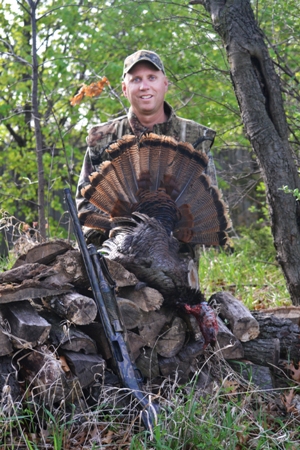 This turkey with his 10-inch bear, 1-inch spurs and weight of 20 to 21 pounds taught me the most about turkey hunting, because I had to use just about everything I had read in books about how to hunt turkeys. I had to:
This turkey with his 10-inch bear, 1-inch spurs and weight of 20 to 21 pounds taught me the most about turkey hunting, because I had to use just about everything I had read in books about how to hunt turkeys. I had to:
- stay out of sight of the gobbler and use my binoculars to make sure that the turkey in the field was a gobbler;
- stalk all the way around the field without the turkey seeing me to get in as close as I could to the turkey before I started to call;
- set-up along the trail that from pre-scouting I knew he had used to leave the field;
- use just about every turkey call I had in my turkey vest, before I found the combination of calls that would make the turkey come in to me;
- be able to read the turkey’s body language to see which calls were having an effect on the turkey and be able to determine which calls the turkey wanted;
- be well camouflaged against a big tree and sit on the shady side of the tree, so the turkey couldn’t see me;
- be able to read the turkey’s body language to know when and why he was about to leave and when to take the shot; and
- remember to aim at the turkey’s wattles with my cheek on the stock, and to make sure I was looking straight down the barrel before I squeezed the trigger.
I think the most-important thing I learned from this hunt was how to read a turkey’s body language, how to understand what calls the turkey wanted to hear and come to, and which calls this gobbler would ignore. One of the most-exciting things for me was to determine what was happening in that turkey’s mind when I called to him. Many times when you call to a turkey, you don’t get to see how he responds to your calling. When I first started calling to this gobbler, I was doing everything right, but the gobbler couldn’t have cared less. However, when I gobbled to him and used two hen calls I hadn’t given before, I realized those were the sounds that would cause him to walk straight to me.
Day 1: You Can Learn to Hunt Turkeys with No Experience and Not Knowing Any Turkey Hunters
Tomorrow: Why I Use the Turkey Call Most Turkey Hunters Don’t














